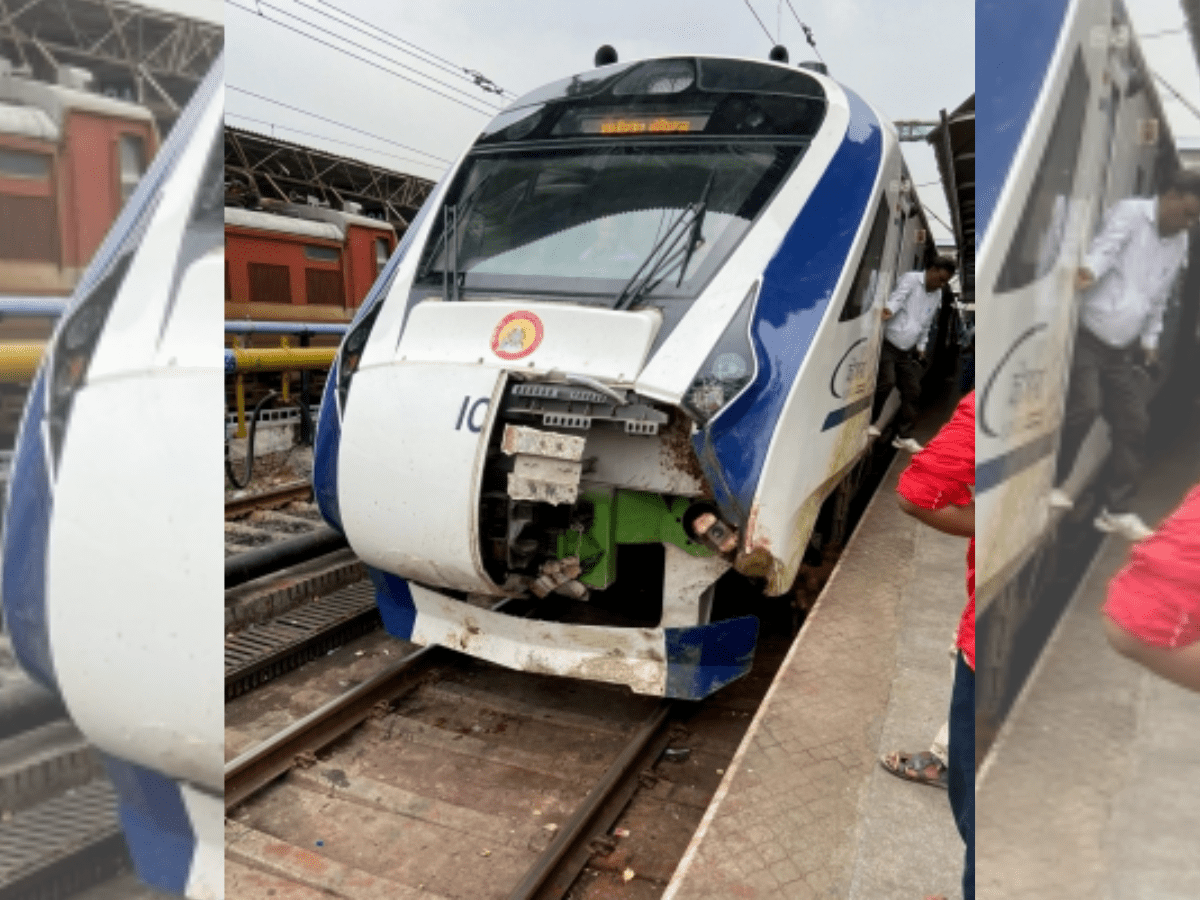
Mumbai: The protruding front portion of the new Mumbai-Gandhinagar Vande Bharat Express train — which was damaged due to a cattle hit on Thursday — got a new ‘nose’ at the Coach Care Centre of the Western Railway, here on Friday, an official said.
The nose, made of FRP (fibre-reinforced plastic) suffered an ugly rip-off as three-four buffaloes were run over between Vatva-Maninagar, near Ahmedabad, around 11.15 a.m., delaying the train by 10 minutes.
However, even on Friday, the Vande Bharat Express with the new nose on the way to Gujarat suffered another similar accident with the front portion suffering a dent near Anand.
After the accident on Thursday, the train travelled between the two cities without the frontal portion and was sent to the repair workshop on Friday.
“The nose cone cover of the train’s driver coach along with its mounting brackets was damaged in the cattle-hit incident…. The vital parts of the train remained unaffected. The damaged nose cone was replaced at Mumbai Central,” said Western Railway chief spokesperson Sumit Thakur.
He explained that the nose cover is designed to absorb the impact without transmitting the same to the functional parts of the train, so it is sacrificial by design and replaceable.
The damaged nose cone — of which the Western Railway has sufficient spares — was quickly replaced during the maintenance and the train deployed back into service without delays.
It departed from Mumbai Central for Gandhinagar but en route suffered another minor mishap which dented the newly-installed nose, which will be set right, said Thakur.
It may be recalled that the indigenously designed and manufactured semi-high speed train was flagged off by Prime Minister Narendra Modi on September 30 and is the third service under the Vande Bharat series, with a capacity to attain up to 200 kmph speeds in future.
